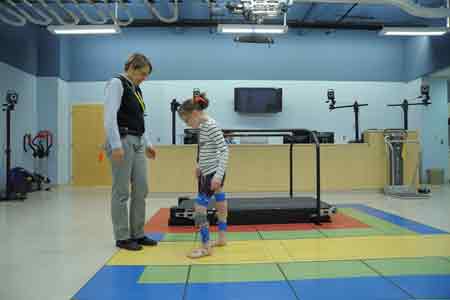Most of us are only acquainted with Cerebral Palsy through TV shows or books, but this is a common condition that impacts many families every year. If you are someone who has a loved one suffering from this condition, or you are simply looking to learn more about Cerebral Palsy yourself, here is a quick reference with all you should know.

Cerebral Palsy in Children
What is Cerebral Palsy?
Cerebral Palsy is a permanent condition that impacts major and minor muscle movements of the person very early on in their life. These muscle disorders can impact the entire body and cause all muscles to be stiff and out of control, or it can only impact one part of the body such as an arm or a leg. There are many different types of Cerebral Palsy to learn about.
Signs and symptoms of Cerebral Palsy
A child with Cerebral Palsy will show many difficulties, or only some depending on the type of severity of Cerebral Palsy they are develop. Common symptoms to watch for are early feeding difficulties, including the ability to feed without guidance, delayed development in speech and movement, poor to no muscle control, lack of coordination, and muscle spasms. If your baby or young child has these difficulties, it is a good idea to get a specialist to check him/her out.
These symptoms will be visible from a very young age, and can be detected early on in life, if not at birth.
Types of Cerebral Palsy
There are four main types of Cerebral Palsy that a child can develop. They are:
Spastic Cerebral Palsy
This is the most common form of Cerebral Palsy that children develop early on in life. This particular condition means that they will have a lot of stiffness in their muscles, which means that large and/or small movements can be difficult for the person to do.
Athetoid Cerebral Palsy
This particular condition can be seen through the fact that the muscles will not be under control, meaning that the limbs and muscles can start to move themselves without the person being aware of it. This is less common than the above type.
Ataxic Cerebral Palsy
This tends to be the least common kind of Cerebral Palsy. It is displayed as a problem with coordination, usually with an unsteady gait or shakes in the hands or legs. These can vary in severity and in the limbs that they are present in.
Mixed Type Cerebral Palsy
As the name suggests, this is a combination of the types of Cerebral Palsy and can come in many combinations and severities.
Causes of Cerebral Palsy
The main cause of Cerebral Palsy is preterm birth, or brain injury shortly after birth. It is believed that this condition is caused by a lack of blood flow to the brain, causing it to develop abnormally.
Treatment, prevention and management
Physiotherapy and speech therapy are common treatments associated with Cerebral Palsy, as they enable a person to live a relatively normal life. This is, however, a lifelong condition that means the person suffering must always have a caretaker who is respectful of the limitations on the condition.
More Information
Cerebral Palsy – betterhealth.vic.gov.au
Cerebral Palsy Wikipedia – en.wikipedia.org

